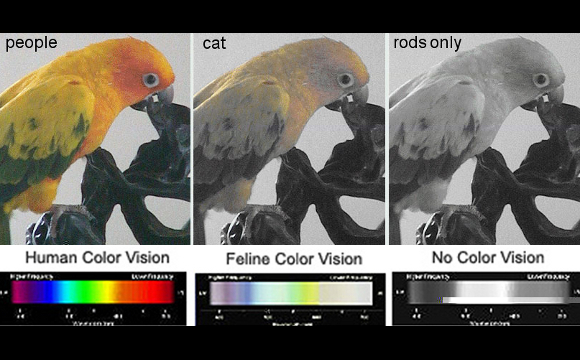Cats are fascinating creatures, not just for their agility, grace, and enigmatic behavior, but also for their unique sensory abilities. Among these, the ability to see ultraviolet (UV) light stands out as a particularly intriguing feature. This article explores the science behind cats’ UV vision, its evolutionary advantages, and its impact on their behavior and perception of the world.
Understanding Ultraviolet Vision
Ultraviolet light is a type of electromagnetic radiation with a wavelength shorter than that of visible light but longer than X-rays. Humans cannot see UV light because our lenses block these wavelengths. However, many animals, including cats, have evolved to perceive UV light, giving them a sensory edge in their environments.
The Science Behind Cats’ UV Vision
Cats’ eyes differ from human eyes in seve
- Lens Transparency:
- Photoreceptors: Cats have a higher density of rod cells in their retinas, which are more sensitive to low light conditions, including UV light. This adaptation helps them see in dim environments.
- Tapetum Lucidum: This reflective layer behind the retina not only enhances night vision but may also aid in detecting UV light by reflecting it back through the retina, giving the photoreceptors a second chance to capture the light.
Evolutionary Advantages of UV Vision
Cats’ ability to see UV light offers several evolutionary benefits:
- Hunting Efficiency: UV vision helps cats detect the urine trails of their prey, such as rodents, which often reflect UV light. This makes it easier for cats to track and hunt their targets.
- Communication: Some social cues among cats, such as markings left by scent glands, may be more visible under UV light. This can facilitate communication and territory marking.
- Camouflage Detection: Many animals and insects use camouflage that is effective under visible light but less so under UV light. Cats can use their UV vision to spot prey that would otherwise be hidden.
How Cats Perceive Their World
The ability to see UV light profoundly affects how cats perceive their environment:
- Vivid Patterns: Surfaces that appear plain to humans may have intricate patterns visible in UV light. This can make the world seem more vibrant and detailed to cats.
- Enhanced Navigation: UV markers in the environment, such as certain plants and flowers that reflect UV light, can help cats navigate and locate resources.
- Psychological Impact: The unique visual stimuli provided by UV vision can influence cats’ behavior and interactions. For example, objects that reflect UV light may be more attractive to cats, affecting their play and hunting behaviors.
The Broader Implications of UV Vision in Animals
Cats are not alone in their ability to see UV light. Many other animals, including birds, insects, and some mammals, share this trait. Understanding UV vision in cats can provide insights into the sensory worlds of other creatures and their ecological interactions.
- Pollinators and Plants: Bees and butterflies use UV vision to find flowers, which often have UV-reflective patterns to attract pollinators. This mutual adaptation enhances pollination efficiency.
- Predator-Prey Dynamics: UV vision can affect predator-prey relationships. Prey animals that can see UV light may develop behaviors or markings to evade UV-sensitive predators.
- Evolutionary Biology: Studying UV vision can reveal evolutionary pathways and adaptations that have shaped the sensory capabilities of various species.
Caring for Cats with UV Vision
Recognizing that cats perceive the world differently can inform better care and enrichment strategies:
- Interactive Toys: Toys that reflect or emit UV light can provide stimulating play experiences for cats, keeping them engaged and active.
- Environmental Enrichment: Creating environments with diverse visual stimuli, including UV patterns, can enhance cats’ quality of life and reduce stress.
- Health Monitoring: Understanding UV vision can help veterinarians develop better diagnostic tools and treatments that consider the unique visual and sensory needs of cats.
Conclusion
Cats’ ability to see ultraviolet light is a remarkable adaptation that enhances their hunting, navigation, and social behaviors. By exploring the science and implications of this trait, we gain a deeper appreciation of these enigmatic animals and their extraordinary sensory world. Whether you’re a cat owner or simply a feline enthusiast, understanding UV vision in cats enriches our knowledge and fosters a more profound connection with these captivating creatures.

